“Is it okay to be a self-taught artist?” You may have wondered at some point on your art journey.
Of course it’s okay to be self-taught!
After all, you don’t need to go to an art school or receive a fancy degree in order to make art and call yourself an artist.
That being said, if you don’t have formal art education, you probably spend time searching for information on how to improve your skills.
That’s why, in today’s article, I’m helping self-taught artists improve their artistic abilities by breaking down:
- What it means to be an artist who is self-taught and not trained
- The benefits and disadvantages that self-taught artists experience
- Practical advice to help untrained artists become as disciplined and skilled as trained artists
By the time you’re done reading, you’ll know how to take actionable steps to improve your art education and become a better artist!
Table of Contents
What is a Self-Taught Artist?
A self-taught artist is someone who did not receive formal art education from an institution such as a college or a university.
Instead, the self-taught artist develops their art skills by learning from a variety of free or paid resources. These resources include:
- Art books
- Community art groups
- Drawing from life
- Plein air painting and drawing
- Figure drawing classes
- In-person workshops
- Step-by-step tutorials
- Online videos found on YouTube, Skillshare, etc.
As you can see, the self-taught artist can access information in a multitude of different ways that suit different learning styles.
In a nutshell, the self-taught artist is responsible for improving their own art education, finding learning materials, and progressing at a pace that matches the time they put into developing their art skills.
Artists such as Vincent van Gogh and Henri Rousseau are both famous self-taught artists.
What is a Trained Artist?
A trained artist is an artist who has received formal art education from a recognized institution where he or she followed a designed curriculum and received a degree or diploma.
The trained artist has paid for their education in order to receive structured, organized, and specialized instruction from qualified professionals.
During a program, the trained artist learns from resources including:
- Art books and class material
- Class excursions to art galleries and museums
- Constructive criticism and professional feedback
- Examinations and tests
- In-person classes
- Projects and essays
The trained artist pays a lot of money to improve their art education. In return, he or she is given a roadmap to develop their skills at a faster pace and with greater expertise than the untrained artist.
Can a Self-Taught Artist be Successful?
Yes! A self-taught artist can be successful!
When all is said and done, having formal art education or a lack thereof does not ultimately determine your success.
Success is determined by your self-discipline, determination, willingness to learn, and commitment to never give up.
Now, let’s look at some of the best advice that will help you improve your skills as a self-taught artist:
- Make sure that you have a solid understanding of art fundamentals because if you don’t learn the basics, you’ll struggle to advance
- Learn how to make time for art on a regular and consistent basis so that you are always practicing
- Never stop learning and experimenting with your art
- Seek constructive criticism from advanced or professional artists so that you understand how to improve your art skills
- Participate in online art communities or attend art classes at community centres to surround yourself with like-minded individuals
- Create a list of art goals and regularly work towards achieving them
- If you’re struggling with creative block, take a break and make art again when your creative batteries are recharged
- Don’t be afraid of failure. Learn from your mistakes and view failure as the ultimate teacher
- Try not to compare your artwork to other artists’ work
- Learn how to overcome your perfectionism so that it doesn’t hold you back from progressing
- Maintain a positive mindset even when you don’t like your work or you feel like your artwork is stagnating
- Learn from the masters by copying their work, but don’t forget to experiment in order to develop your own unique art style
- Practice, practice, practice!
There are many more pieces of advice that I could give you, but I believe these are the golden nuggets of wisdom that will provide you the most value.
So, take note of these tips and start implementing the ones that you believe will benefit you the most.
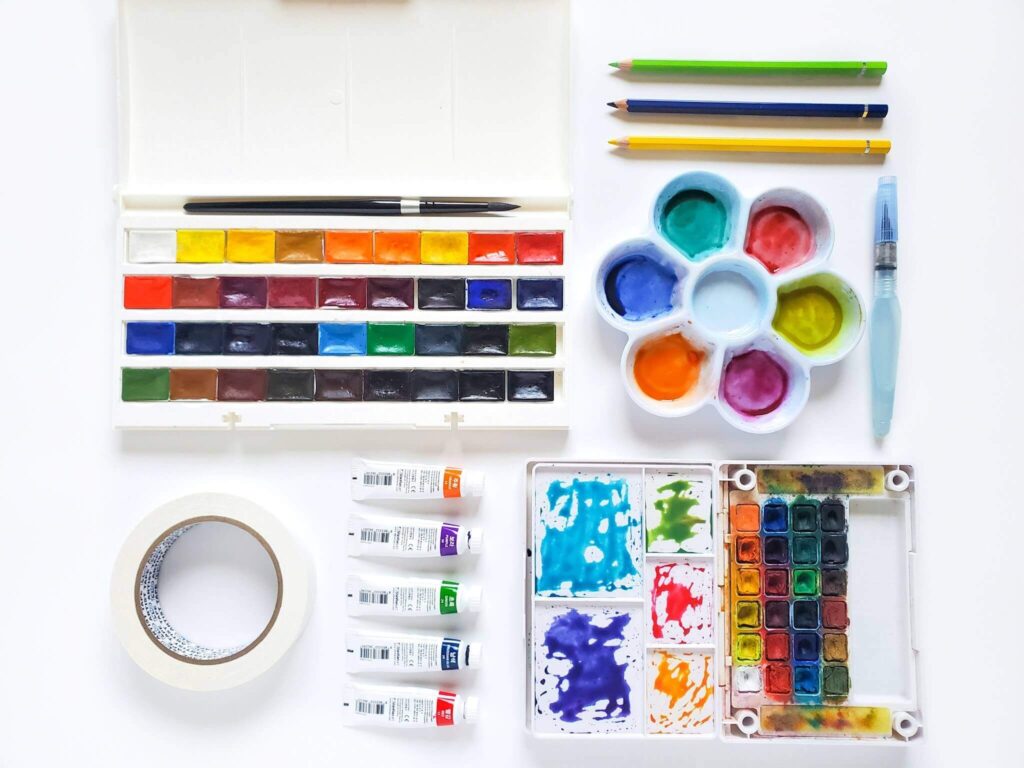
Self-Taught Vs Trained Artist
There are many benefits and drawbacks of being a self-taught artist. The same is true for the professionally trained artist.
Which is why there are many, many opinions regarding the self-taught artist vs art school debate.
Since both have their own unique pros and cons, it should be noted that neither is better nor worse than the other.
It all just depends on perspective and personal preference.
So, let’s compare and contrast them.
Benefits of Being a Self-Taught Artist
There are many amazing benefits of being a self-taught artist.
One of the greatest benefits is that you do not need to spend thousands of dollars on formal art education to develop the same artistic skillset as a trained artist.
Here is a list of advantages that self-taught artists experience:
- You choose to progress at your own pace
- You create your own flexible schedule for developing your art skills
- All of the information that trained artists receive is available for free via the Internet, the library, and online courses or videos
- Your creativity isn’t stifled by academic expectations and strict teachings of what is and isn’t “real art”
- You do not experience the pressure associated with formal examinations, evaluations, and projects
- Self-taught artists can build their portfolios to display their artwork. In other words, formal education does not guarantee a job in an artistic field because ultimately it comes down to the skill level and portfolio of the individual applying for the job
As you can see, if the self-taught artist is clever and determined, he or she can achieve many of the same results as the trained artist.
For this reason, there is a rise in the number of self-taught artists who are making a living from their art and thriving without formal art education.
Disadvantages of Being a Self-Taught Artist
That being said, there are some notable drawbacks of being a self-taught artist.
Especially when you compare them directly to trained artists. Several disadvantages include:
- You might overlook learning the art fundamentals such as light and shadow, proportions, perspective, composition, colour theory, etc.
- Lack of professional guidance makes it more difficult to know where to begin and how to proceed at your current skill level
- Self-taught artists often lack professional feedback, which means you might keep making the same mistakes over and over
- Not having a structured curriculum means you might not be developing your skills in a logical order
- Without professional guidance, it could take you longer to develop your skills to the same level as a trained artist
Don’t worry if you identify with any of these shortcomings.
In the upcoming sections, I’ll share with you my best tips to help you improve your skills with ease and clarity.
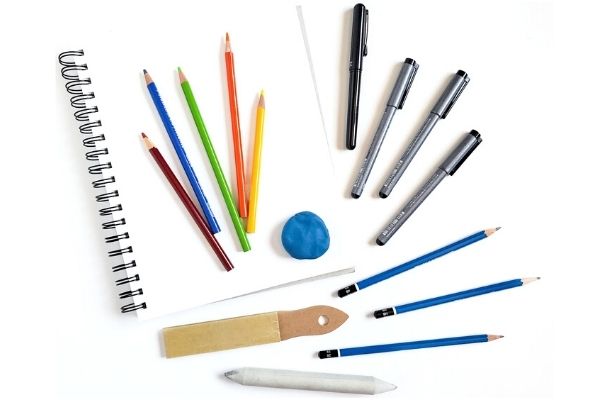
Benefits of Being a Trained Artist
We explored the many ways in which the self-taught artist benefits from an informal art education.
Nevertheless, there are many reasons for which people pay good money for formal art education.
So, let’s explore the most valuable benefits of being a trained artist:
- Formal art education speeds up the learning process because a structured curriculum helps you advance on a consistent basis
- Trained artists understand how to receive art criticism by professional artists
- Formal schooling helps trained artists develop the right fundamental knowledge upon which to refine and advance their skills
- Receiving accreditation from an institution makes it easier to find a job in an artistic or creative field
- Trained artists may find it easier to network through their school, peers, or teachers in order to find great opportunities in their field
So, if you want a more structured and organized way of learning art, becoming a trained professional is the way to go.
Disadvantages of Being a Trained Artist
That being said, there are some less than glamourous aspects of being a trained artist.
The biggest drawback is that formal art education is very expensive.
And the worst part is that a graduate is not guaranteed to work in an artistic field or even earn decent money for the investment they made in their education.
So, let’s explore a few other downsides of being a trained artist:
- Formal art education has a reputation for being restrictive, so it may stifle your individual creativity
- Art institutions often have preconceived ideas of what counts as “real art”, which may discourage students from pursuing their interests
- A disciplined self-taught artist can develop the same knowledge and skillset as a professional artist
- Formal art education does not guarantee that public reception to your artwork will be better than that of an untrained artist
- Finding a job directly related to your art degree can often be difficult
Regardless of these drawbacks, if you have the determination to succeed, you can always find a way to make your formal art education work in your favour.
Conclusion
In this article, you learned about what it means to be a self-taught artist.
What’s more, you now understand the important distinctions that differentiate a self-taught artist from a trained artist.
But at the end of the day, whether you’re professionally trained or not doesn’t matter.
Because if you create art, you are an artist.
So don’t stress out about your identity as a self-taught or trained artist. But if you struggle with this issue, check out these self-care tips for artists.
How you go about perfecting your craft is completely up to you. Remember: the world is your oyster.
So, if you’ve been struggling with your identity as a self-taught artist, understand that you are not alone.
In fact, every year more and more people are taking up art and learning how to create art on their own terms.
Now get out there and start using these tips to level up your skills so that you can become an even more successful self-taught artist!
Are you a self-taught or a trained artist? Do you agree with the pros and cons of each type of artist? Share your opinion in the comments below!
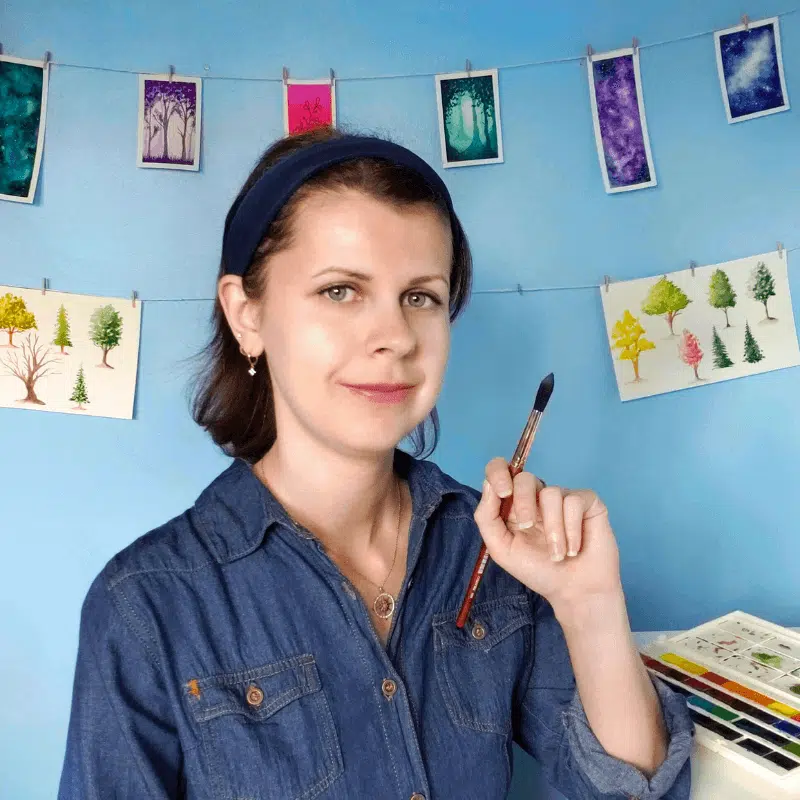
Miranda Balogh
Artist & Online Educator


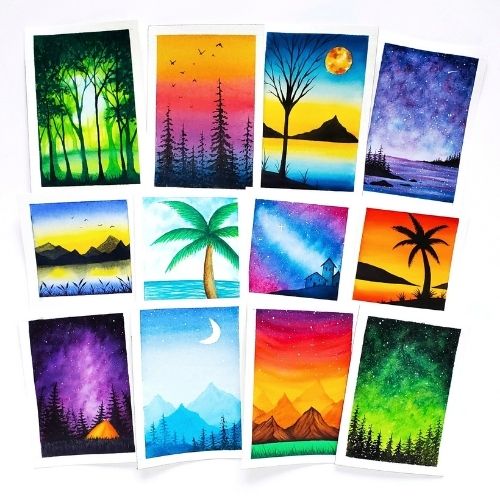
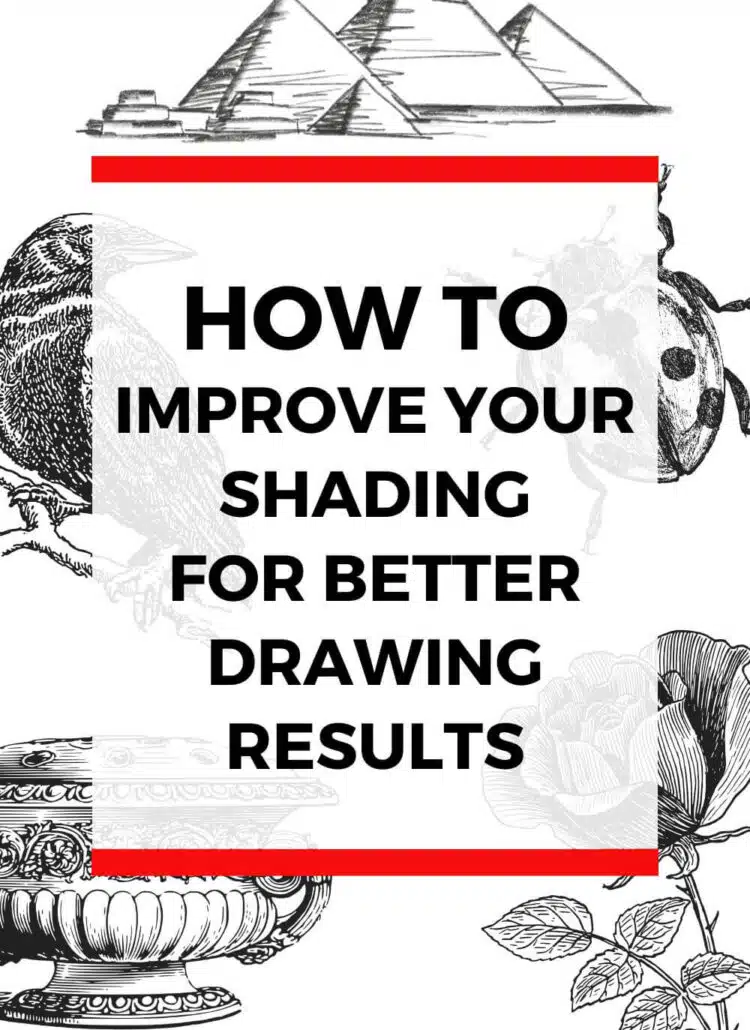
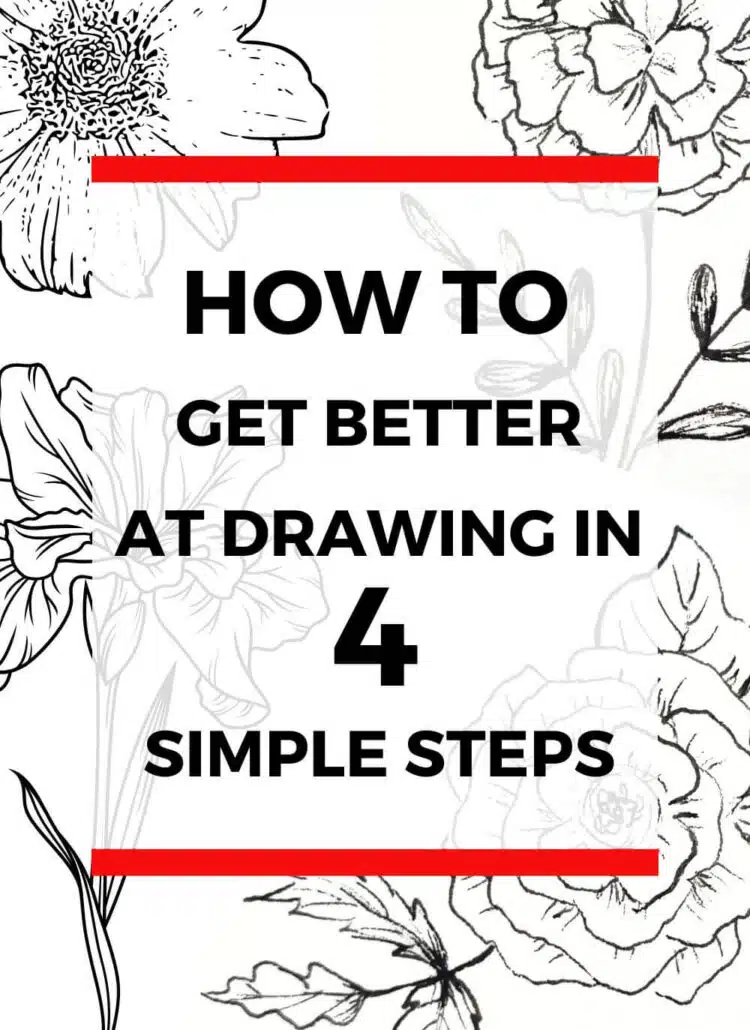

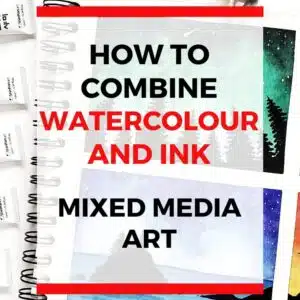
This is really inspirational, especially to an artist discovering their talent later in life or someone too busy to get a traditional art education. I live in a very artist prominent community and I can think of countless, successful artists I know who are self-taught! It’s entirely possible!
It’s so encouraging to hear that you’re surrounded by a community of successful artists. Thank you for sharing such a positive message!
Love this! I’m no artist but I do like being creative and playing around with art! My daughter went to art school and she loves art! Thanks for sharing, love your point of view on things like this!
I’m glad to hear that both you and your daughter enjoy art!
Its amazing how in this day and age you can really learn so much from online communities. Its great how their are Facebook groups, etc. to help people connect and grow with others.
Agreed! Since self-taught artists have accessibility to free online art education in the form of communities, YouTube, and tutorials, it’s much easier now to become a skilled artist without going to art school.
I like practicing art its relaxing
Yes, art can be very calming and therapeutic!
I absolutely love this! I love art and I used to think it’s wrong to be serious with it when I didn’t go to any art school whatsoever. This really inspired me xx
Whether you’re a self-taught artist or a trained artist, you can take art as seriously or leisurely as you like. It’s your choice!
This came at the perfect time for my daughter. She loves and appreciates art and but doesn’t see herself as an artist, even though she’s only of the most creative people I know with some excellent drawing skills too. Her art teachers are doing a great job of breaking the model set by the early classroom and even early art teachers that things needed to look a certain way. What a shame that this mindset needs to be changed.
You’re right that negative mindsets need to be changed. So it’s wonderful to see that your daughter now has great art teachers who are modelling positive artist mindsets. Thanks for sharing your story!
You’ve given me inspiration to get out of my comfort zone and try! I am always afraid of failing when it comes to creative pursuits, but I am motivated now… thank you!
You’re welcome! Like you, I sometimes suffer from the fear of failure when it comes to creative activities. But with a little support and encouragement, we can all overcome our fears.
I have always enjoyed art but was never brave enough to spend time on this skill. I think at the back of my mind I’ve always thought you needed to be formally trained. Reading your article has changed my mind and inspired me to give it a go!
I’m glad that this article has inspired you!
Okay, first I love your artwork. It’s so beautiful.
And reading this made me dream again regarding trying out art because I had a bad experience with it in school with a not so fun art teacher.
But I liked the part where you said it’s important to make time for creating, and making room to learn and improve in one’s art.
Thank you! I’m sorry to hear that your art school teacher left a bad impression on you. But the good thing is that now you can decide for yourself what kind of art you want to make, how you want to make it, and when you want to create to turn art into a positive experience. Thanks for sharing your story!
WOW, this is so inspiring. I’m not much of an artist, but I know so many people who want to be successful with their art. There is such a negative stigma where people feel like art isn’t successful, and you are proving them wrong.
Thank you for sharing such positive and encouraging words. Much appreciated!
How can I join
Hi! What do you want to join? If you’d like the join our art community, you can sign up for weekly newsletters by checking out the form at the bottom of this article. Or, you can download any of the free art resources on this website to be automatically added to our community newsletter. The choice is yours!